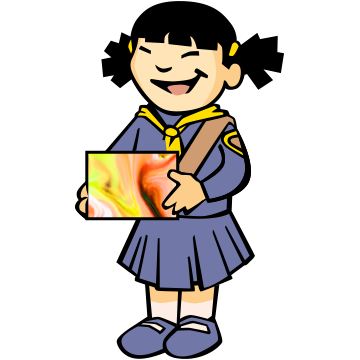Boston Children's Museum
308 Congress Street, Boston, MA 02210
617-426-6500
© Boston Children’s Museum 2024
Website Design by JackrabbitHow can art help kids engage with science? The natural world is the source of so much inspiration in art, literature, invention and much more, and the images produced by NASA and others’ space telescopes is some of the most breathtaking and inspiring imagery imaginable. Associating science with art presents the world as a place filled with connections, and helps children to practice two often overlooked STEM skills – creativity and imagination. And by asking children to use astronomical images as inspiration for their artwork, you are also asking them to closely observe – and therefore learn more about – these astronomical objects and phenomena.
This activity has a good deal of materials, and requires some work to set up – but it is worth it in order to give kids a chance to explore a few different methods of painting, all at once. Print the NASA Inspirations images from this curriculum (click here), or show them on a computer, or even projected on a wall. If this is your first time printing these images, keep them – they can be used for a few other activities in this curriculum. You may want to laminate them to keep them in good shape. You may want to print out instructions for each of the painting techniques as well – one copy of each technique, for placing at each painting station should do.
Read the instructions below – this activity describes four different painting techniques, all of which are simple, but all of which produce different results. These instructions are for quick experiments to see what results these different techniques produce. Try all four of these techniques with your children as described below, if you can. You can simplify the activity by choosing one, two or three of the techniques to use.
Note the instructions for “Rubbing alcohol and Watercolor Paint” – if you are working with younger children, you might choose to drip the alcohol for them.
Gather all materials, and set up stations for each of the watercolor exploration techniques that you will be using.

Ask your students if they have ever looked up at the sky and seen different colors. What colors have they seen? Have they ever seen any images of object in space that have interesting colors? Show them the printed or on-screen NASA images. What kinds of colors do they see?
Experiment with different watercolor techniques, then see which astronomy image it most looks like!
Watercolor and Salt
What do you do?
Rubbing Alcohol and Watercolor Paint
Important notes about using alcohol with paint:
What do you do?
Watercolor and Wax Resist
What do you do?
Tissue Paper and Water
What do you do?
After your children have tried each of these techniques, bring them together to share the results. Have them show their labeled papers to the larger group. What do they notice about the results from each technique? What do they like? What do the images that are created remind them of?
Go back to the NASA images, and look through them with your students. Do they see any images that remind them of the results of any of the painting techniques they tried above? Tell them that you would now like them to choose a NASA image, and create a painting using one of the techniques they tried. They can either try to create a painting similar to their chosen NASA image, or simply create a painting that is inspired by it. For example, a picture of the Cat’s Eye Nebula (https://www.nasa.gov/multimedia/imagegallery/image_feature_211.html) could result in a child trying to paint a picture of the Cat’s Eye Nebula; or they could create a more free-form painting just using the same colors; or they might even paint a cat with the same colors and patterns seen in the photo of the Cat’s Eye Nebula. Once children have created their paintings, have them share with the class. Then, maybe you could have a gallery show – group paintings next to printouts of the NASA images that inspired the paintings, and invite parents to come see the show.
https://amazing-space.stsci.edu/resource/resource_index/lithographs/type
Other great NASA image sites include:
https://www.nasa.gov/multimedia/imagegallery/index.html
Earth and Space science activities were developed with the support of NASA. This material is based upon work supported by NASA under grant award number NNX14AQ83G. Any opinions, findings, and conclusions or recommendations expressed in this material are those of the author(s) and do not necessarily reflect the views of the National Aeronautics and Space Administration (NASA).
http://www.jpl.nasa.gov/spaceimages/
http://www.jpl.nasa.gov/spaceimages/searchwp.php?category=universe
What happens when salt is added to watercolor?
Salt sprinkled on damp watercolor paint creates a delicate flower-like spot. Each crystal of salt chases away the pigment to make a lighter area beneath it. Salt is what is called a “desiccant”, meaning it sucks up liquid (in this case, water).
What happens when alcohol is added to watercolor?
Alcohol repels water, pushing the paint away and creating interesting white circular shapes when spattered or dripped. Spraying alcohol will have the same effect but the texture will be thinner. This technique works better when the wash is still wet but has lost some of its shine.
Why do these everyday substances like salt and alcohol react the way they do to watercolors?
The alcohol in the technique above behaves much like soap would, weakening the surface tension of the water. Water molecules are very strongly attracted to other water molecules. Think of two magnets connected to each other. When the alcohol enters the equation, it weakens those connections, causing the water molecules to separate away from each other.